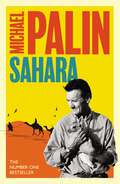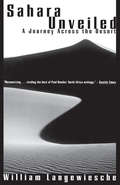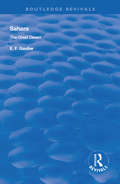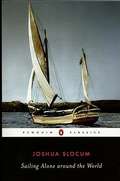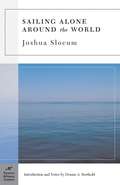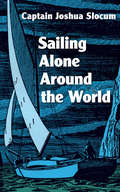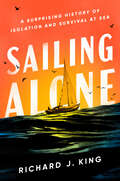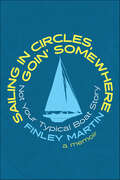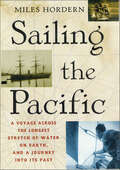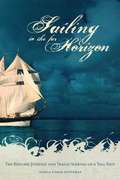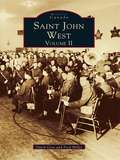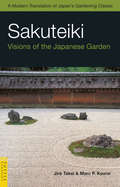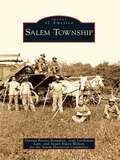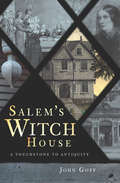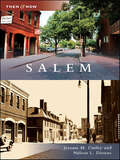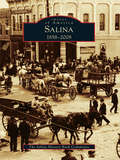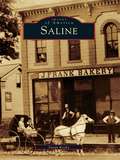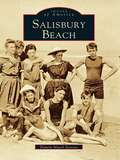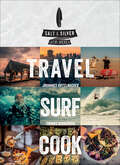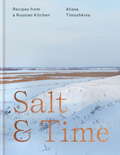- Table View
- List View
Sahara
by Michael PalinMichael Palin's superb No. 1 bestseller about his incredible voyage across the Sahara.Michael Palin's epic voyages have seen him circumnavigate the globe, travel from the North to the South Pole and circle the countries of the Pacific Ocean, but this was perhaps the greatest challenge yet: to cross the vast and merciless Sahara desert. As the journey unfolds, the Sahara reveals not the emptiness of endless sand dunes, but a huge and diverse range of cultures and landscapes and a long history of commerce and conquest stretching from the time of the ancient Egyptians to the oil-rich Islamic republics of today. On his way, he encounters dangers such as camel stew, being run over by the Paris-Dakar rally and Dakar nightlife, as well as returning to the original spot where THE LIFE OF BRIAN was filmed.
Sahara Unveiled
by William LangewiescheThe world's most vast and forbidding desert is revealed in all its cruelty and wonder in this masterpiece of contemporary travel writing by the author of "Cutting for Sign". Determined to see the Sahara as its inhabitants do, Langewiesche crossed this enormous desert from Algiers to Dakar, braving its natural and human dangers and depending on its sparse sustenance and suspect charity. Photos. Map.
Sahara: The Great Desert (Routledge Revivals)
by E. F. GautierThis book was originally published in 1935. The Sahara, or as it is otherwise known, the Great Desert, is probably the most outstanding desert on the surface of the earth - not only because of its exceptional aridity, but by reason of its tremendous size as well. This book examines the Sahara, including chapters on the structural formation, the climate, the geological past, and the different regions of the Sahara.
Sailing Alone Around The World
by Joshua SlocumAs the first person to ever complete a single-handed circumnavigation of the globe, Joshua Slocum recounts his pioneering feat in Sailing Alone Around the World (1899), an engaging memoir of his adventures aboard the sloop Spray. An immediate success, the book has inspired countless later travelers. Slocum, a master of understating his achievements, rebuilt the derelict sloop Spray between 1893 and 1894 and set off on his voyage in April 24, 1895. His voyage generated much publicity at the time and he was awaited by eager supporters at many of his ports of call.
Sailing Alone Around the World
by Capt. Joshua SlocumThe actual experiences during cruise around the world in the Spray with a crew of one, 1895-98.
Sailing Alone Around the World
by Joshua Slocum Dennis A. BertholdFull of astounding adventures, "Sailing Alone around the World " is the true story of the first man ever to circle the globe alone entirely by sea. In a little over three years, Captain Joshua Slocum completed the feat many experts believed couldn't be done--and he has the stories to prove it. During his historic voyage, Slocum was chased by pirates in Gibraltar, soaked by a "rain of blood" in Australia, and battered by perilous storms in the open ocean. He also met many famous--and infamous--people along the way, from Mrs. Robert Louis Stevenson in Samoa, to Black Pedro, "the worst murderer in Tierra del Fuego." This absorbing tale, written with humor and poetic eloquence, was first published in 1900 and has remained in print ever since.
Sailing Alone Around the World
by Joshua Slocum"One of the most readable books in the whole library of adventure." -- Sports Illustrated. Classic of sea adventure conveys all the excitement of being the first man to sail around the world, alone, in small boat. Pirates, perils, witty observations, stories. 67 illustrations. "A literary gem, adroitly and engagingly written." -- National Fisherman.
Sailing Alone: A Surprising History of Isolation and Survival at Sea
by Richard J. King&“A masterfully curated collection...You don&’t have to be a sailor to be blown away by this fascinating, bighearted book.&” —Nathaniel Philbrick, author of In the Heart of the Sea, Travels with George, and Second WindA story as vast and exhilarating as the open ocean itself, SAILING ALONE chronicles the daring, disastrous, and often absurd history of those who chose to sail across the ocean, in very small boats, alone.Sailing by yourself, out of sight of land, can be invigorating and terrifying, compelling and tedious - and sometimes all of the above in one morning. But it is also a wide expanse of time in which to think. Sailing Alone tells the story of some of the remarkable people who, over the last four centuries, have spent weeks and months, moving slowly over the world's largest laboratory: a capricious and startling place in which to observe oneself, the weather, the stars, and countless sea creatures, from the tiniest to the most massive and threatening. Richard J. King profiles characters famous, diverse, international, and obscure, from Joshua Slocum of 1898 to modern teenagers daring to take the challenge. They see strange hallucinations, lie to us (and themselves) on their travel logs, encounter sharks, befriend birds, and experience ESP, all part of the unnerving reality of extended isolation. And some disappear altogether. Sailing Alone also recounts the author's own nearly catastrophic solo crossing of the Atlantic, and the mystery of his inexplicable survival one sunny afternoon. An enormously engaging new book for skippers and armchair voyagers alike.
Sailing in Circles, Goin' Somewhere: Not Your Typical Boat Story
by Finley MartinNot all dreams have happy endings. Sailing in Circles, Goin’ Somewhere is the funny, bittersweet memoir of a Prince Edward Island man who, over seven years, builds a classic 1930s wooden sailboat and, in 2004, attempts to circumnavigate eastern North America. The author leaves a small fishing port on the Island and tracks along the rugged coast, up the St. Lawrence River, and through the Great Lakes. Alone, he encounters heavy fog, near-collisions with freighters, mechanical breakdowns, enormous seas, several brushes with disaster, and even a hostile reception at one French-speaking port. He meets odd and curious people. It all comes to an inglorious and mundane end when the author and his boat, the Arja D., are stuck in, of all places, Peoria, Illinois. Was it worth it? Maybe.Written by Finley Martin, a respected Island fiction writer, this finely crafted and humorous book will appeal to adventurers, sailors, and lovers of a good yarn.
Sailing on the Mayflower: A This or That Debate (This or That?: History Edition)
by Jessica RusickIn September 1620, 102 brave travelers and their crew stepped upon a ship called the Mayflower in England. Most were members of a religious group now known as the Pilgrims. They were bound for North America to start a new life. They endured many hardships and made many tough choices. Now the choices are yours. Would you rather suffer from seasickness or from skin sores caused by scurvy? Would you rather have been a crew member navigating the ship in stormy seas or cramped into the living quarters just along for the tumultuous ride? It's your turn to pick this or that!
Sailing the Pacific: A Voyage Across the Longest Stretch of Water on Earth, and a Journey into Its Past
by Miles HordernSolo sailors are widely known to be a breed apart, and here's an unforgettable book that shows just how wide a berth they give themselves from the crowds. Several years ago, Miles Hordern, a schoolteacher by training---though he had run away to sea a few times before---set sail on a twenty-eight-foot boat from New Zealand to South America, the largest uninterrupted stretch of water on earth, and into the dominion of icebergs, cyclones, and swells of monumental proportions. The trip would take him through the fjords of Patagonia, one of the last uncharted areas in the world, then north on the Peru Current before he began his homeward voyage.Sailing the Pacific recounts that trip in prose so vivid you can almost feel the spray sting your face and the deck heave beneath your feet. Here is prose so hawser-taut that it takes you back to Conrad, Melville, and Poe, indeed all those writers whose works about the bounding main have launched countless imaginations. Hordern pauses to consider those who have gone before him, recounting the stories that have given life to this lonely and magisterial part of the world. Writers, adventurers, fictional characters, cartographers, doomed voyages from history's pages—from the Whaleship S.S. Essex to the HMS Bounty: the South Pacific drew them all, and in their way they left mark on its vast surface.Part sailing yarn, part adventure story, part homage to an unending but beckoning horizon, Sailing the Pacific will appeal to the sailor in each one of us, whatever the way we choose to answer the ocean's call.
Sailing to the Far Horizon
by Pamela Sisman BittermanOf the legions of wayfarers who shared in the tall ship Sofia's diverse and colorful history, only seventeen were on board when she went down. Of those who survived to tell the tale, none has . . . until now. More than twenty-five years ago, Pamela Bitterman began her journey on board a 123-foot, sixty-year-old sailing ship being readied for its second global circumnavigation. Bitterman's initial voyage, during which Hurricane Kendra chased the schooner miles off course to Bermuda, did not impel her to retreat home. Instead, she immersed herself in this created space between the life of a tall ship sailor, world traveler, and adventurer. Her narrative describes rare gatherings with Cuna Indians in the Gulf of San Blas, the discovery of original ancient tikis hidden away in the Marquesas, and a treasured offering of traditional tapa cloth from island natives. Bitterman's experiences also give readers insight into a time of civil unrest in Latin America, including a frightening road trip through Mexico and Central America, and the chaos during the final stages of the treaty that returned control of the Canal Zone back to Panama. The drama ensues with the arrest of the entire Sofia crew in two different countries, a bout with dengue fever, and a near-mutiny in New Zealand before the final voyage. The details of events from this journey endure as vividly today as when Bitterman was a naive "shellback" swabbie, later ship's bos'un, and finally acting first mate. In the end, she was merely one on a life raft of grateful survivors. Sailing to the Far Horizondraws on original journal entries, photographs, and excerpts from official Coast Guard documents that chronicle the fascinating enigma that was the Sofia and its dramatic end.
Saint John West: Volume II (Historic Canada)
by David Goss Fred MillerSaint John West Volume II adds to and continues the story of the West Side's struggle for existence. Always dependent on seasonal industry, initially fishing and shipbuilding and later the railway and seaport, the area has seen high and low points in its 200-plus years of existence. At one time, residents imagined times would become so prosperous that King Street would be transformed into a major boulevard paved with gold and Courtenay Hill would be the site of a huge, decorative cathedral dedicated to the inner spirit. In reality, the fish have stopped coming, the wooden ships are no longer built, and the Canadian Pacific railway that provided hundreds of jobs and promised such hope has left the Maritimes. Changing trade patterns and political favours to keep the St. Lawrence open to Montreal has devastated the winter-port operations. Many Saint John West residents have had to close their businesses and move on. Others were displaced when the construction of the Harbour Bridge tore three full blocks out of the heart of the community in 1968. Still others have chosen to remain, and today, though little industry exists, the area is still vibrant and working hard to hold together some vestige of the pride of former times.
Saint-Germain-des-Pres: Paris's Rebel Quarter
by John BaxterFrom the bestselling author of The Most Beautiful Walk in the World comes this first book in an exciting new series of narrative "biographies" of Paris's great neighborhoods, beginning with Saint-Germain-des-Pres--the city's "rebel quarter," for centuries a center of artistic, intellectual, and revolutionary activity and home to some of Paris's most iconic cafes and shops.For many years, Saint-Germain-des-Pres has been a stronghold of sans culottes, a refuge to artists, a paradise for bohemians. It's where Marat printed L'Ami du Peuple and Thomas Paine wrote The Rights of Man. Napoleon, Hemingway, and Sartre have all called it home. Descartes is buried there. Now bestselling author and Paris expert, John Baxter takes readers and travelers on a narrative tour of Saint-Germain-des-Pres, which is also where Baxter makes his home.Tucked along the shores of the Left Bank, Saint-Germain-des-Pres embodies so much of what makes Paris special. Its cobblestone streets and ancient facades survive to this day, spared from modernization thanks to a quirk in their construction. Traditionally cheap rents attracted outsiders and political dissidents from the days of Robespierre to the student revolts of the 1960s. And its intellectual pedigree boasts such luminaries as Pablo Picasso, Arthur Rimbaud, F. Scott Fitzgerald, Simone de Beauvoir, Gertrude Stein, and Albert Camus. Baxter reveals all, guiding readers to the cafes, gardens, shops, and monuments that bring this hidden history to life.Part-history, part-guidebook, Saint-Germain-des-Pres is a fresh look at one of the City of Light's most iconic quarters, and a delight for new tourists and Paris veterans alike.
Sake Confidential
by John GauntnerWith today's sake drinkers increasingly informed and adventurous, now is the time for a truly expert guide to take you deeper into appreciation of this complex but delightful Japanese beverage, brewed from rice and enjoyed both warm or chilled.And what better mentor than John Gauntner, the "Sake Guy" and the world's leading non-Japanese sake educator and evangelist? Here in over two dozen no-holds-barred essays, John reveals "the truth about sake" from a connected insider's perspective. No other book or website presents such a knowledgeable, practical, and concise yet complete guide to sake idiosyncrasies, misperceptions, and controversies.Sake Confidential is the perfect FAQ for beginners, experts, and sommeliers. Indexed for easy reference with suggested brands and label photos. Includes: Sake Secrets: junmai vs. non-junmai, namazake, aging, dry vs. sweet, ginjo, warm vs. chilled, nigori, water, yeast, rice, regionality How the Industry Really Works: pricing, contests, distribution, glassware, milling, food pairing The Brewer's Art Revealed: koji-making, brewers' guilds, grading John Gauntner John Gauntner is the only non-Japanese certified Master of Sake Tasting. A resident of Japan since 1988, he has worked in the sake industry promoting and educating since 1994. Each year he conducts Sake Professional Courses for sake professionals and aficionados, and several of his students have gone on to open thriving sake shops, breweries, and izakaya in the United States.
Sakuteiki
by Marc P. Keane Jiro TakeiThe Sakuteiki, or "Records of Garden Making," was written nearly one thousand years ago. It is the oldest existing text on Japanese gardening-or any kind of gardening—in the world. In this edition of the Sakuteiki the authors provide both an English-language translation of this classic work and an introduction to the cultural and historical context that led to the development of Japanese gardening.
Salem Township
by Jean Loedeman Lam Salem Historical Committee Dianna Beaudoin Susan Kipen WeltonBefore white settlers came to the area that is now Salem Township, Potawatomi Indians hunted and fished in a forest filled with abundant wildlife. The settlers cleared the trees to work the land and built a lumber mill along Little Rabbit River. Salem was primarily a farming community carved out by hardworking pioneers. Four towns were established to serve this farming community: Diamond Springs to the south, New Salem to the north, and Burnips Corners and Salem Center (now known as Burnips) in the center. In 1855, Salem Township separated from Monterey Township; then, in the 1930s, the discovery of oil brought financial relief to Salem farm families who struggled to maintain their farms. A new wave of residents came to settle in the Salem area as men seeking work in the oil fields brought their families to the community.
Salem's Witch House: A Touchstone to Antiquity (Landmarks Ser.)
by John GoffA close-up look at this historic Massachusetts landmark, including photos and illustrations. Though Salem is located on Massachusetts&’s scenic North Shore, its history has not always been picturesque. The &“Witch City,&” as it is internationally known, is home to numerous landmarks dedicated to the notorious trials of 1692. Of these, the Witch House is perhaps most significant—the former residence of Judge Jonathan Corwin, whose court ordered the execution of twenty men and women. It was here that Corwin examined the unfortunate accused. There is, however, more to this ancient building than its most famous occupant. From wars and death to prosperity and progress, this book searches beneath the beams and studs of the Witch House—to find the stories of those who called this place home.
Salem: Victorian Salem In 3d: A Collection Of 70 Images Of Victorian Salem From The 1870s With A 3d Viewer (Then and Now)
by Jerome M. Curley Nelson L. DionneSalem, Massachusetts, is a little city steeped in history. Known as the Witch City for the Puritan witchcraft trials of 1692, Salem boasts a rich heritage as a major East India seaport. Trading with China made Salem the richest city in America, generating a living architectural history. As Salem developed, it preserved much of its history.Known as the Witch City for the Puritan witchcraft trials of 1692, Salem boasts a rich heritage as a major East India seaport. Trading with China made Salem the richest city in America, generating a living architectural history. As Salem developed, it preserved much of its history.
Salina: 1858-2008
by The Salina History Book CommitteeEarly in 1858, three men walked across the eastern half of Kansas Territory intent on starting a town. Although the volatile conflict between Free State and proslavery forces still simmered, the bloodshed had abated, and Free State factions had gained the upper hand. People turned their interests to more peaceful pursuits, including town building. Armed with a compass and stovepipe hat instead of a tripod, the three young Scotsmen selected and surveyed a town site along the Smoky Hill River, near the confluence of the Saline River in north-central Kansas. The tiny settlement soon became a way-stop for westbound travelers and a hub of activity for hunters, soldiers, land seekers, and surveyors. Now 150 years later, Salina (pronounced with a long i) still thrives as a center for commercial, cultural, civic, and social activity. Voted an All-America City in 1989, Salina is home to nearly 50,000 people who enjoy midwestern living in the heart of America.
Saline
by Susan KoskySince settlers first arrived in the early 1800s, the city of Saline has developed into a strong community with deep cultural roots. This informative book documents Saline's development and progress, exploring settlement, transportation, agriculture, architecture, business, and education through rare archival photographs. Author Susan Kosky takes readers on a detailed visual tour of Saline's rich history, revealing the remarkable people, places, and events that have shaped the area and made it what it is today.
Salisbury Beach (Images of America)
by Pamela Mutch StevensSalisbury Beach, surrounded by marshes and folklore of buried treasure, has long been a mecca for summer vacationers. In the "good ole summertime" of the 1890s, Salisbury Beach became the favorite resort of residents of the Merrimack Valley. Was it the magnetic force of the tide that beckoned people to the seaside, or was it the carefree carnival attitude that followed the Victorian era? Passengers arrived by horse, boat, train, electric trolley, andthen by automobile to picnic on the beach and partake of the healthy sea air. By the light of the moon and the roar of the surf, couples danced the sultry summer nights away in the Ocean Echo and later at the Frolics. With the recent demolition of the Frolics, those evenings of dancing cheek to cheek to the music of Lionel Hampton and Frank Sinatra reside now only in memories. But for a briefmoment in time, the gleaming white roller coaster towered like a giant skeleton over the amusement park while music piped out of the turret of the Ocean Echo Hotel, adding to the festive mood of the crowd.
Salt & Silver: Travel, Surf, Cook
by Johannes RiffelmacherTwo surfers look for Latin America’s best waves—and best food: “Part travelogue, part cookbook, and all outstanding . . . an epic trip that’s well worth taking.” —Publishers Weekly (starred review)This book traces the journey of surfers Johannes Riffelmacher and Thomas Kosikowski as they make their way through Central and South America—reporting on the best surfing locations, chronicling the stories of local surfers and restaurant owners, and compiling recipes representative of each area. The narrative begins in Cuba with beautiful images of the city and the beaches, as well as stories related to the Cuban surfing community and a discussion of popular Cuban dishes. Next is a tour of Mexico—first with street tacos, a trip through Mexican markets, and a day spent in the urban graffiti scene of Guadalajara; then with Tostadas de Pulpo (Octopus Crackers), Shrimp and Portobello Burgers, and a glimpse into life in the remote surfing town of San Pancho. The Mexican leg of the journey draws to a conclusion with seven-meter-waves, BBQ, and Tajine in Rio Nexpa, as well as “a perfect righthander barreling of a point” in scenic La Ticla. Then the two men make their way through Nicaragua, Costa Rica, Panama, Ecuador, Peru, and finally Chile, exploring the beaches as well as the kitchens of each location. Interspersed throughout are more than ninety regional recipes, over 250 stunning photographs, and a wide array of tips and stories ranging from social commentary to pointers on how to rent a “Hamaquera” in La Ticla for three dollars a night.“The recipes . . . are real-deal, the photography is breathtaking, and the tales of full immersion are inspiring.” —Nick McGregor, Eastern Surf Magazine
Salt & Time: Recipes from a Russian kitchen
by Alissa TimoshkinaSalt & Time will transform perceptions of the food of the former Soviet Union, and especially Siberia - the crossroads of Eastern European and Central Asian cuisine - with 100 inviting recipes adapted for modern tastes and Western kitchens, and evocative storytelling to explain and entice. Why not try the restorative Solyanka fish soup (a famous Russian hangover cure), savour the fragrant Chicken with prunes or treat yourself to some Napoleon cake.'Often we need distance and time, both to see things better and to feel closer to them. This is certainly true of the food of my home country, Russia - or Siberia, to be exact. When I think of Siberia, I hear the sound of fresh snow crunching beneath my feet. Today, whenever I crush sea salt flakes between my fingers as I cook, I think of that sound. In this book I feature recipes that are authentic to Siberia, classic Russian flavour combinations and my modern interpretations. You will find dishes from the pre-revolutionary era and the Soviet days, as well as contemporary approaches - revealing a cuisine that is vibrant, nourishing, exciting and above all relevant no matter the time or the place.' - Alissa Timoshkina'If anyone had to write a Russian cookbook now, it would have to be her, and her book will end up being a classic' - Olia Hercules, author of Mamushka and Kaukasis
Salt & Time: Recipes from a Russian kitchen
by Alissa Timoshkina'Some cookbooks take you on a journey that is as poetic as it is geographical and culinary, and Salt & Time is just such a one...enthusiastic, often playful, and full of encouragement to cook dishes that are invitingly unfamiliar.' - Nigella Lawson 'If anyone had to write a Russian cookbook now, it would have to be her, and her book will end up being a classic' - Olia Hercules, author of Mamushka and Kaukasis'One flick through this book...shows the region's cuisine take form in dazzling vibrancy' - Foodism Salt & Time will transform perceptions of the food of the former Soviet Union, and especially Siberia - the crossroads of Eastern European and Central Asian cuisine - with 100 inviting recipes adapted for modern tastes and Western kitchens, and evocative storytelling to explain and entice. Why not try the restorative Solyanka fish soup (a famous Russian hangover cure), savour the fragrant Chicken with prunes or treat yourself to some Napoleon cake.'Often we need distance and time, both to see things better and to feel closer to them. This is certainly true of the food of my home country, Russia - or Siberia, to be exact. When I think of Siberia, I hear the sound of fresh snow crunching beneath my feet. Today, whenever I crush sea salt flakes between my fingers as I cook, I think of that sound. In this book I feature recipes that are authentic to Siberia, classic Russian flavour combinations and my modern interpretations. You will find dishes from the pre-revolutionary era and the Soviet days, as well as contemporary approaches - revealing a cuisine that is vibrant, nourishing, exciting and above all relevant no matter the time or the place.' - Alissa Timoshkina
